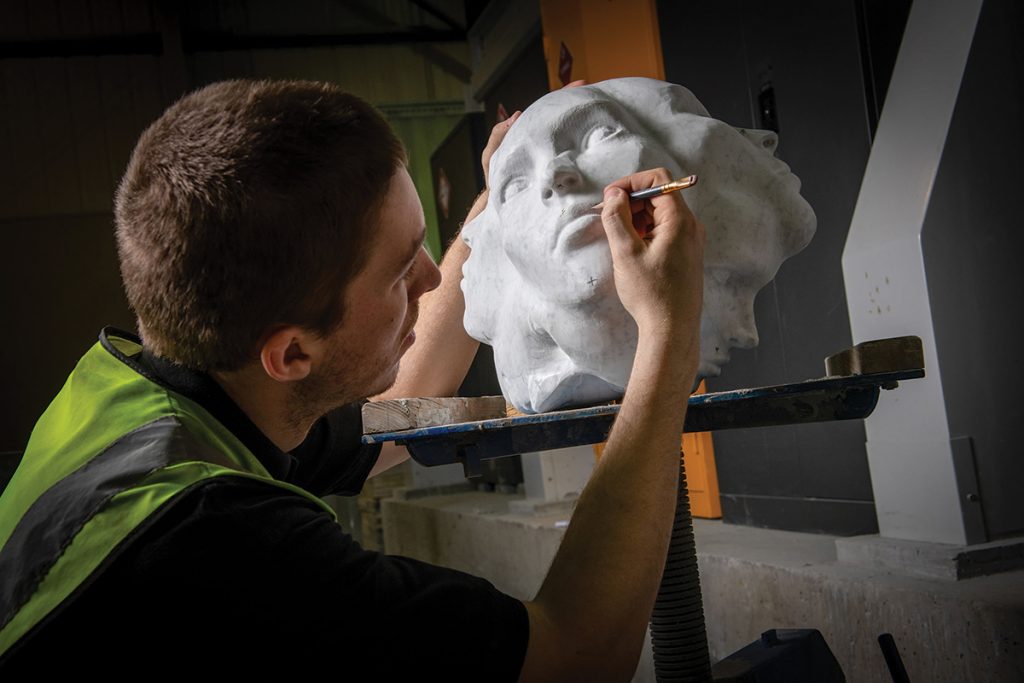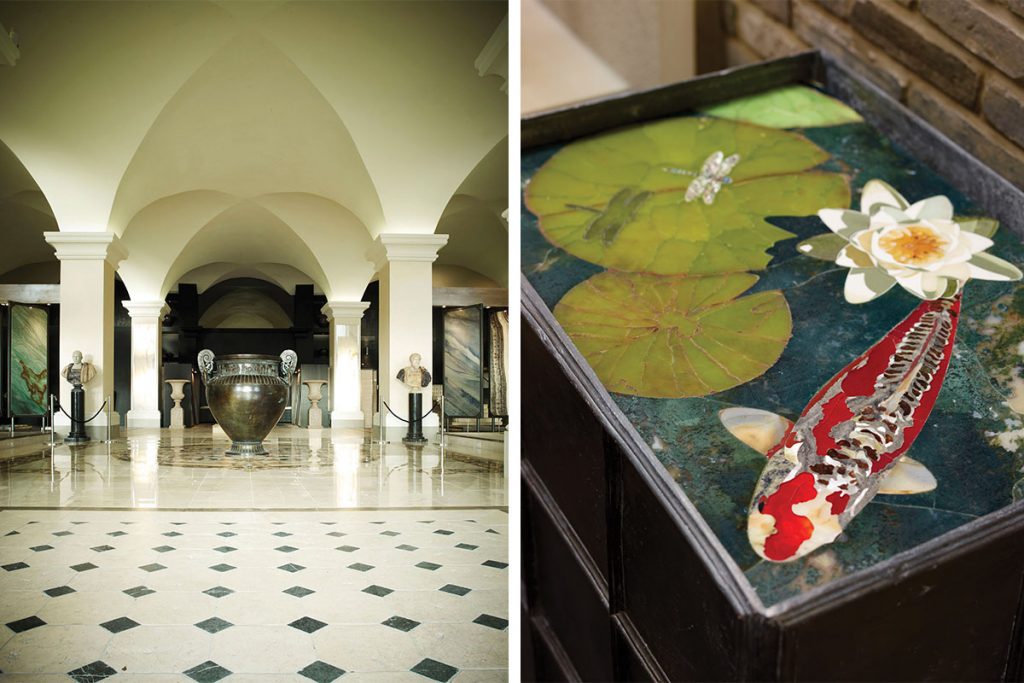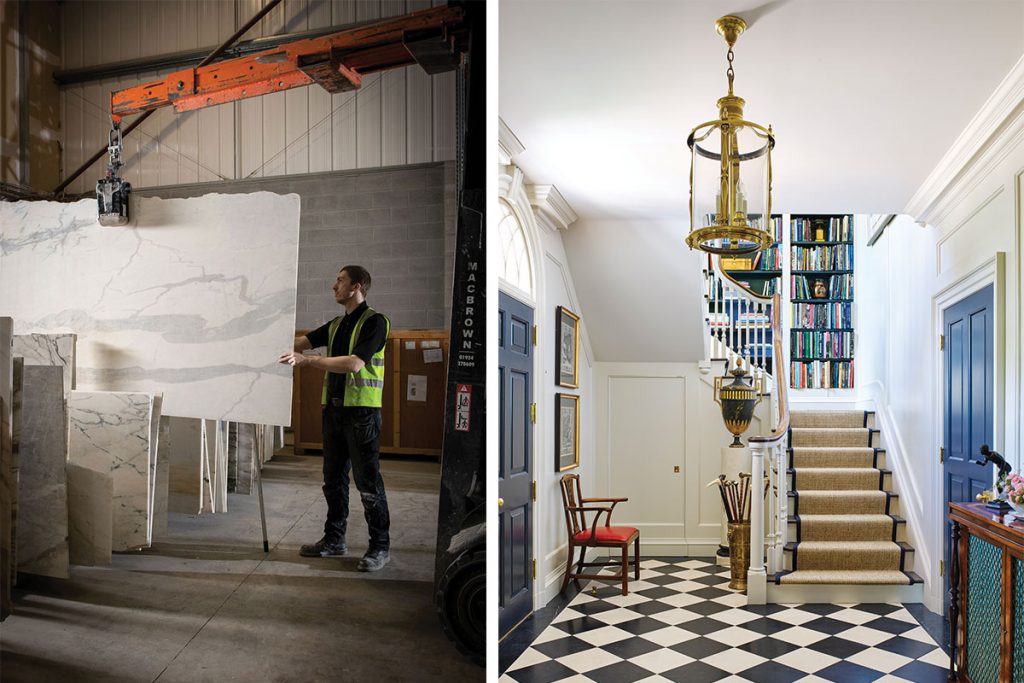The stone and tile specialist is increasingly in demand for restoration projects

Words Catherine Coyle
Grantley Hall in Yorkshire was built as a grand family home in the 17th century. For 200 years it welcomed politicians, royalty and celebrities. In the 20th century it sheltered injured soldiers, welcomed Vera Lynn to entertain the troops and, more recently, operated as an adult learning centre.
Today, following an extensive programme of restoration, the grade II*-listed stately home is a luxury hotel. Its lavish reception rooms are certainly not showing their age; the upgrading is so well done it’s hard to distinguish old from new.
This exemplary blend of heritage and modern craft is just one of the properties that stone specialist Lapicida has been called upon to help rejuvenate. The family business operates from a three-acre site in Harrogate that includes Europe’s largest stone and tile showroom, a manufacturing facility and a warehouse. The business began 30 years ago, when Jason Cherrington made a pilgrimage to the Far East in search of new materials to bring back to the UK. He set up Lapicida, and today it supplies new and antique natural stone and marble, as well as ceramics and new-generation porcelains.

On his journey through Asia, Jason was fascinated by what he found, developing a taste for further exploration. “I recognised that there was interest in feature stones,” he recalls. “I undertook extensive geological research, which took me to South Africa. That trip was incredibly rewarding; I came back with some very different natural stone products, including sandstones.
“After that, I researched more and bought products from Italy, Israel, Portugal, Germany and all over the world. I was looking for the rare and unusual, learning all the time.”
Traditional artisans and modern technicians work side by side at Lapicida’s state-of-the-art workshop, where equipment has become ever more sophisticated over the years. Jason’s son Milo leads the company’s CNC (computer numerical control) shaping mill, where one of the largest CNC machines in the world can work a block of stone or marble up to 25 tonnes (the average car, in comparison, weighs less than two tonnes).

Because its portfolio is so varied and it is able to accurately match and replicate surfaces for historic buildings, the firm is often asked to work on conservation and restoration projects such as Grantley Hall. “We also have a growing range of innovative new-generation porcelains, one of which, Illusion, is a replica of natural limestone,” says Jason. “The random pattern of shells, veins and mineral nuances recreates the natural stone so well that it’s almost impossible to distinguish from the real thing.”
As well as manufacturing and supplying intricate flooring and wall surfaces, the company is increasingly being asked to create bespoke one-off pieces in collaboration with architects, designers and artists. Some projects are relatively straightforward, such as marble baths and basins; others are more complex – one client commissioned a giant skull, fashioned from a 1.2-metre block of Carrara marble, to be used as a champagne bucket for a lavish party. And then there are the real challenges.

“We worked with the renowned artist Christopher Le Brun on a five-metre high, 2.5-tonne wing-shaped sculpture,” recalls Jason. “The work, entitled Maro, was created in five pieces and took 25 days of sculpting on our specialist CNC five-axis cutting machine. It took a further six weeks of hand-finishing by two of our expert craftsmen before it was finally assembled in situ in the grounds of Chatsworth House.”
Collaborations with other design heavyweights are, thank-fully, on a more manageable scale. Sculptural stone candlesticks by Lara Bohinc take on a contemporary geometric form, while Anouska Hempel’s pared-back marble tableware is an easy way to own a piece of luxury. Jason advises caution, however: “A sense of humour is essential when working with natural materials… what Mother Nature creates and what the client requests are often quite different!”




